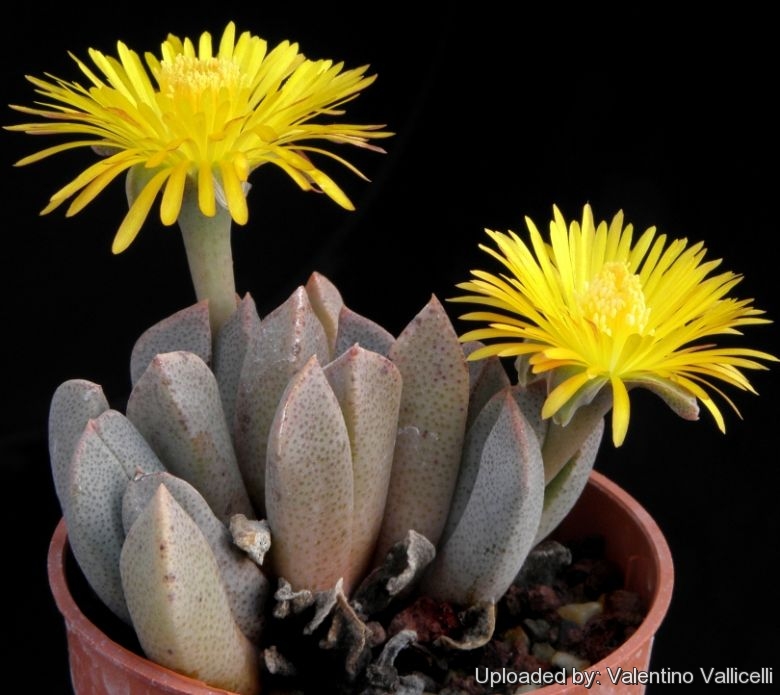
Prepodesma orpenii Photo by: Valentino Vallicelli
It produces smooth glaucous leaves and bright yellow flowers.
Origin and Habitat: Northern Cape, South Africa
Habitat: Arid subtropics. It grows in dry plane lands on barren loamy shales or in crevices between quartzitic limestone stones. Rainfall 300-400 mm per annum in winter.
Ecology: The mechanism of seed dispersal is through a higrochastic fruit and the seed is only dispersed in the immediate environment, which results in local small communities.
Synonyms:
See all synonyms of Prepodesma orpenii
back
Accepted name in llifle Database:Prepodesma orpenii (N.E.Br.) N.E.Br.Gard. Chron. 1931, Ser. III. lxxxix. 389.Synonymy: 6
back
Description: Prepodesma orpeniiSN|768]]SN|768]] (Often called Nananthus orpeniiSN|770]]SN|770]]) is a low, multi-branching, mat-forming species with compact succulent rosettes of 2-4 pairs of leaves.
Stem: Almost stemless. Invisible.
Root: Deep, inconspicuous central rhizome or rootstock.
Leaves: 2-3 cm long, 6-8 mm broad and thick, trigonous, boat-shaped, spreading a little, with distinct but rounded margins and keel, humped at the back below the tip, mucronate, bluish-green often tinged with purple in cold or deep sun with elevations and papillae visible as small dark dots.
Flowers: Solitary 40-50 mm in diameter, up to 35 mm long, bracteoles shorter than the leaves, bright yellow or whitish-yellow often reddish below. Stamens 250-270 forming an erect bundle in the centre of the flower.
Blooming seson: Opening in the afternoon between 3 and 6 post meridian.
Fruit: (5-)7(-9) chambered on long persistent stalks.
Seeds: Almost ovate in outline 1-1,2 mm long, 0,6-0,8 mm wide, light brown and smooth.
Bibliography: Major references and further lectures
1) H. E. K. Hartmann “Illustrated Handbook of Succulent Plants: Aizoaceae F-Z” Springer, 2002
2) James Cullen, Sabina G. Knees, H. Suzanne Cubey “The European Garden Flora Flowering Plants: A Manual for the Identification of Plants Cultivated in Europe, Both Out-of-Doors” Cambridge University Press, 11/Aug./2011
3) Raimondo, D., von Staden, L., Foden, W., Victor, J.E., Helme, N.A., Turner, R.C., Kamundi, D.A. and Manyama, P.A. 2009. “Red List of South African Plants.” Strelitzia 25. South African National Biodiversity Institute, Pretoria.
4) Alfred Byrd Graf “Tropica: color cyclopedia of exotic plants and trees for warm-region horticulture, in cool climate, the summer garden, or sheltered indoors” Roehrs Co., 1992
 Prepodesma orpenii Photo by: Valentino Vallicelli
Prepodesma orpenii Photo by: Valentino Vallicelli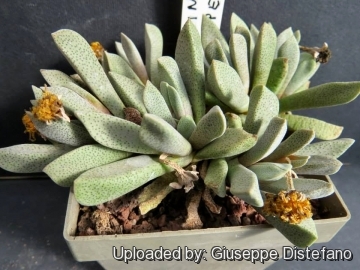 Prepodesma orpenii Photo by: Giuseppe Distefano
Prepodesma orpenii Photo by: Giuseppe Distefano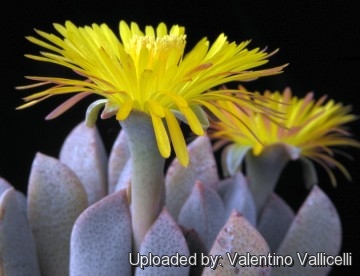 Prepodesma orpenii Photo by: Valentino Vallicelli
Prepodesma orpenii Photo by: Valentino Vallicelli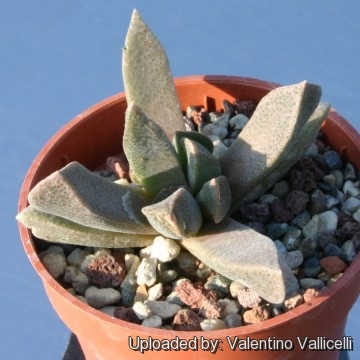 Prepodesma orpenii Photo by: Valentino Vallicelli
Prepodesma orpenii Photo by: Valentino Vallicelli Prepodesma orpenii Photo by: Valentino Vallicelli
Prepodesma orpenii Photo by: Valentino Vallicelli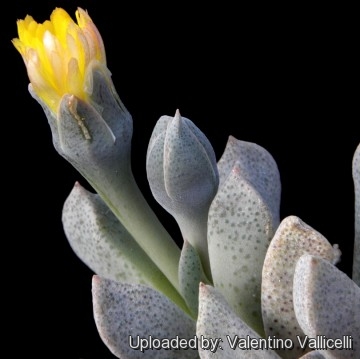 Prepodesma orpenii Photo by: Valentino Vallicelli
Prepodesma orpenii Photo by: Valentino Vallicelli Prepodesma orpenii Photo by: Giuseppe Distefano
Prepodesma orpenii Photo by: Giuseppe Distefano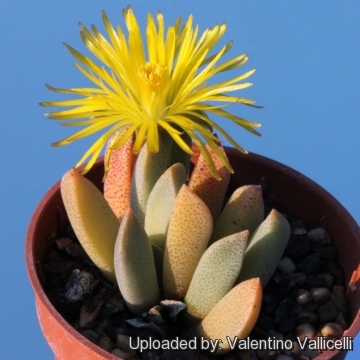 Prepodesma orpenii Photo by: Valentino Vallicelli
Prepodesma orpenii Photo by: Valentino VallicelliCultivation and Propagation: They are easy and rewarding plants than can be grown in pots or in the rock-garden.
Soil: Potted Prepodesma look best in a heavy soil and the same is true for plants in a rockery. Requires good drainage.
Pots: They need small but relatively deep pots to accommodate their roots and provide a very good drainage. They may stay in the same pot for many years.
Watering: They come from winter rainfall areas but in cultivation, they can be watered year-round, water regularly from spring to Autumn but reduce watering frequency in winter, growth period is late summer to spring, but it is a very adaptable species that can grows opportunistically whenever the water availability and growing condition are favourable. Water it less than average if in bigger pots.
Fertilization: Feed them once during the growing season with a fertilizer specifically formulated for cactus and succulents (high potash fertilizer with a dilute low nitrogen), including all micro nutrients and trace elements diluted to ½ the strength recommended on the label. They thrive in poor soils and need a limited supplies of fertilizer to avoid the plants developing excess vegetation, which is easily attacked by fungal diseases.
Exposure: Keep them cool, and half-shaded in summer, need full sun or light shade on the other seasons. They become stressed with inadequate light which could result in poor growth and unnatural shape.
Frost Tolerance: In cultivation they likes warmth (recommended minimum winter temperature 5° C) however plants kept perfectly dry are quite frost hardy (it is reported to be hardy to at least -18° C if very dry). Outdoors they grow best where there are cold winters, but for safe cultivation it is best to avoid freezing temperatures.
Special need: Provide very good ventilation. Nearly all problems occur as a result of overwatering and poor ventilation, especially when weather conditions are dull and cool or very humid.
Use: This is a good pot plant suited for a non heated green house. It can be also cultivated outdoors in raised beds, terraces if sheltered from winter rain.
Pests & diseases: These succulents may be attractive to a variety of insects, but plants in good condition should be nearly pest-free, particularly if they are grown in a mineral potting-mix, with good exposure and ventilation. Nonetheless, there are several pests to watch for:
- Red spiders: Red spiders may be effectively rubbed up by misting the plants from above.
- Mealy bugs: Mealy bugs occasionally develop aerial into the new leaves and flowers with disfiguring results, but the worst types develop underground on the roots and are invisible except by their effects.
- Rot: Rot is only a minor problem if the plants are watered and “aired” correctly. If they are not, fungicides won't help all that much.
Propagation: Cuttings or seeds. Like most others in this family, this small clump- forming plant is easy to grow from seed. For good germination the small seeds should be scattered on the surface of the compost, any time during the spring when temperatures are warm. Cover the seeds with a fine layer of grit and water from below with a fungicide to prevent damping off. For the 1-2 weeks cover the pots with a sheet of glass/clear perspex to keep the humidity levels high. Remove the glass and replace it with light shade-cloth and mist once or twice a day for the next two weeks after which most seeds should have germinated. From then on mistings can be reduced to every second and then every third day as the little plants grow.
Your Photos
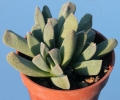
by Valentino Vallicelli
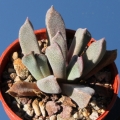
by Valentino Vallicelli
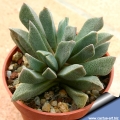
by Cactus Art






















